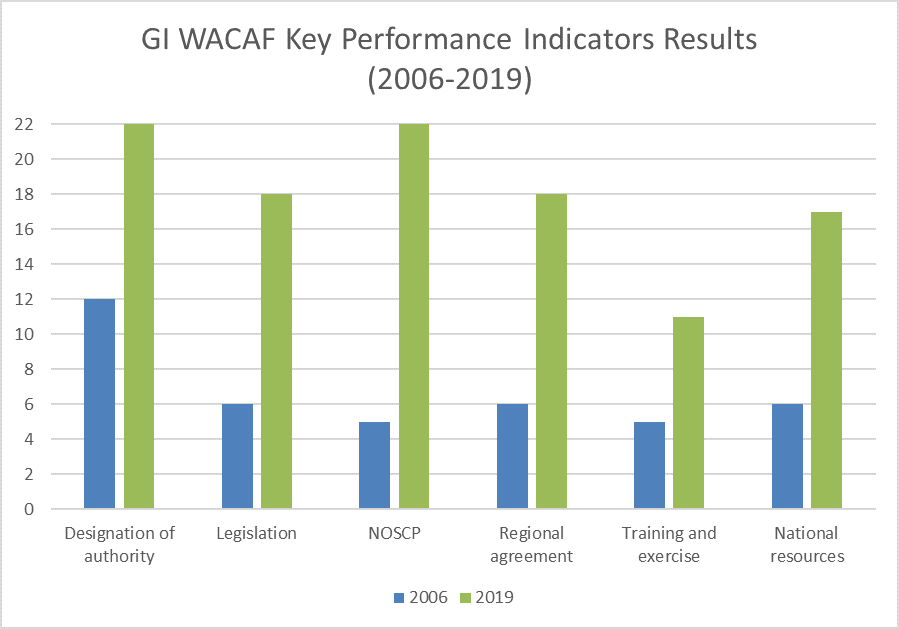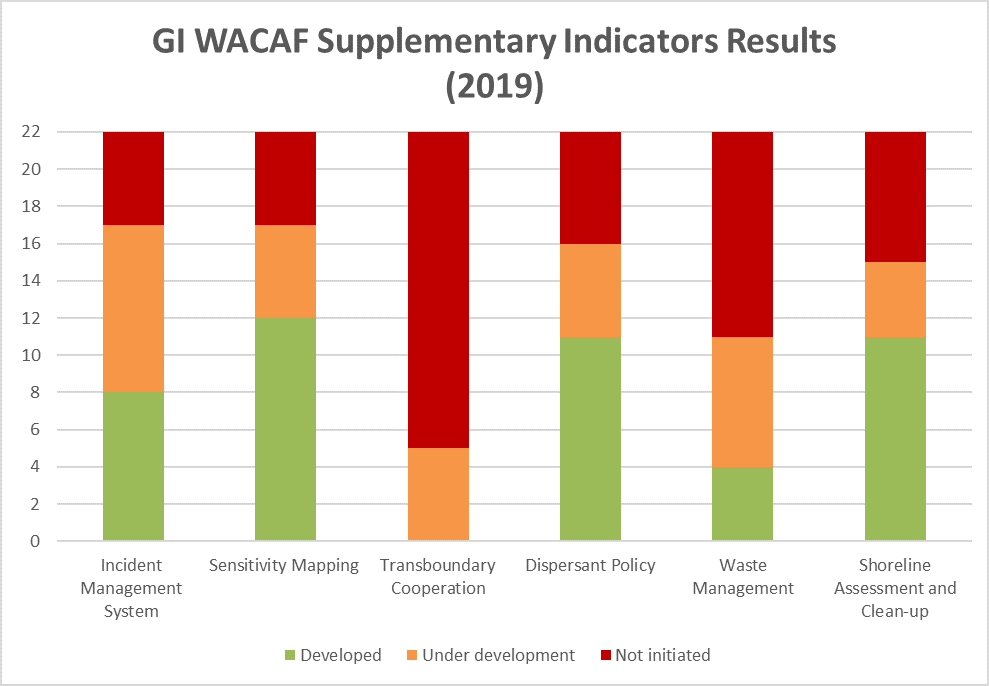- Home
- The Project
- Objectives
GI WACAF, a Project of technical cooperation that benefits every actor in the region
Enhancing the level of preparedness and response to oil spill in the region to contribute to the protection of marine environment
The GI WACAF works in close cooperation with relevant national authorities in 22 African countries, supporting them in the strengthening of their oil spill preparedness and response capacities. By doing so, the GI WACAF is contributing to a better protection of the marine environment in the region.
A method beneficial for everyone in the region
To achieve its mission, the GI WACAF Project organizes and delivers activities that aim to communicate good practice in all aspects of spill preparedness and response, drawing on expertise and experience from within governments, industry and other organizations working in this specialized field. GI WACAF encourages and support industry and governments to work cooperatively.
The Project’s activities are supported and facilitated by its network of dedicated government and industry focal points. Among them, the GI WACAF Regional Conference forms an integral part of the biennial management system of the Project. Every two years it gathers industry and government focal points from across the region with the objective to exchange experiences, review progress achieved and prioritise goals for the next biennium. GI WACAF dialogues with national authorities to constantly adapt to reflect the various needs of the partner countries. The different activities organised by the Project can thus take various forms from workshops to trainings, technical advice missions or exercises.
GI WACAF ensures by this method a long-term follow-up of the countries based on a 3-step systemic approach of preparation and response to oil spill:
- First, establishing the legislative and regulatory framework is the foundation to an effective national preparedness and response system.
- Second, countries are encouraged to set up policies, processes and tools to implement the legislative framework.
- Finally, cross-functional aspects, such as the implementation of database, trans-boundary cooperation, are recognized as an integral part of a successful approach.
By contributing to the implementation of international agreements GI WACAF is helping both governments and operators reach high standards in their contingency planning and thus reduce environmental consequences in the event of a major oil spill. This benefits the industries as well as the governments. While countries see their level of preparedness and response to oil spill enhanced, industry benefits from the improvement of the legal and institutional framework that reduces regulatory uncertainty and ease the dialogue with relevant authorities.
Assessing the need of the region
First key indicators
During the early years of GI WACAF, a broad picture of the state of preparedness and response capability in the region was drafted. The information provided by relevant government and industry representatives provided the necessary material to undertake a gap analysis study (GI WACAF Annual Review, 2006). The data collected in 2006 have been monitored since and regularly updated against key indicators covering the requirements of the OPRC 90 Convention. Since 2006, using data submitted by each country during the biennial Regional conferences, it has been possible to monitor the evolution of the level of national preparedness and response capabilities across the region.
6 main indicators have been developed to follow this evolution:
- Designation of authorities in charge: The country has in place a designated national authority to deal with oil spill related issues;
- Legislation: The country has ratified the relevant international conventions, first of all the OPRC 90 Convention;
- National Oil Spill Contingency plan (NOSCP): The country has, at least a draft, or approved NOSCP;
- Regional agreement: The country has in place either a regional or sub-regional agreement relating to oil spill response cooperation;
- Training and Exercise: The country has undertaken oil spill training and exercises at national level at least once a year; and
- National Resources: The country has equipment and resources to adequately address oil spill risks (tier 1).

New qualitative indicators
Whilst the trend across the region has shown a marked development in oil spill response capability, the rate at which this development has taken place has varied significantly among individual countries, with some advancing more rapidly than others. In this regard, the project’s work programme has become much more diversified in recent years in order to respond to the needs of individual countries.
As capabilities improved and to develop a more qualitative reporting of the progress made, the Project Secretariat developed new indicators. These supplementary indicators were subsequently endorsed by the Steering Committee in 2015 and consist of:
- Sensitivity Maps,
- Dispersant Policy,
- Shoreline Assessment and Clean-up,
- Waste Management Plan,
- Trans-boundary Cooperation, and
- Incident Management System.

Achievements
With more than 110 activities organised in 22 countries, and more than 5,000 personnel trained, the GI WACAF method of operating has been proved efficient over time and valuable for the region.
Since 2006, the GI WACAF Project has implemented over 110 workshops, training courses and conferences. During this period significant advancements in preparedness and response in the region have been made. Of particular note is the progress made with designating national authorities responsible for oil pollution preparedness and response in each country, as well as the development of national contingency plans, which are now in place throughout the vast majority of the region.
A source of pride is how the Project has been embraced by countries in the region, which is demonstrated through the commitment and enthusiasm shown by industry and government focal points, as well as the participants who have attended GI WACAF activities. The achievements made in oil spill preparedness and response clearly demonstrate the effectiveness and momentum of this project.
